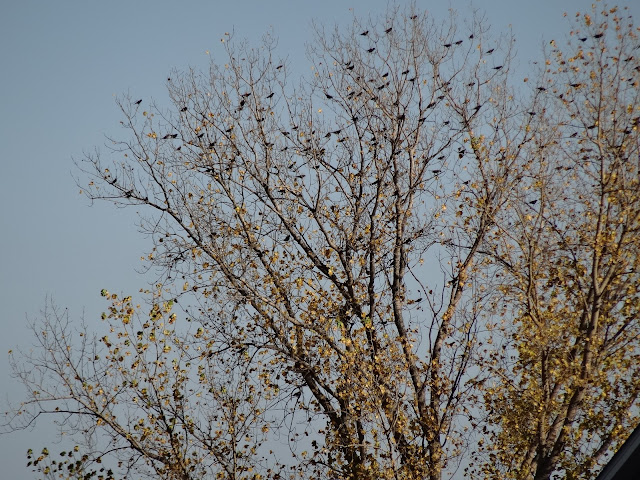This fallen leaf has galls all over it, lumps or complicated structures that look like capsules containing something mysterious. Galls are made by one of 1500 species of gall producers -- mostly insects and mites. Some galls form on leaves where insects feed on the plant matter, or lay eggs. Galls may also develop as a response to infections by fungi, bacteria, or viruses. Dissecting the gall is the only sure way to tell what caused it. That's a whole different adventure!
11/02/2021
leaf veins
I can't resist looking closely at leaves. Sometimes, I take the interesting ones with me for later study. This maple tree next to the pond always has some message or lesson for me.
Today it displayed nice autumn color. But later I studied the veins that give the maple leaf it's unique shape. Not only does venation give each leaf it's biomechanical strength to grow and stay on the tree through all kinds of weather all summer long! Veins also function as transport vessels.The leaf is a main component in the plant's hydraulic system to move water and nutrients from the ground throughout the tree.
The larger veins provide immense leaf structure support, and the various smaller veins provide photosynthetic gas exchange and enable the plant's growth.
10/25/2021
muskrats chasing ducks
10/20/2021
mallards showing off
10/18/2021
black birds roosting
10/08/2021
10/05/2021
pond lily
How nice to have a pond lily! We anticipated seeing it bloom next season. The little plant was happy in this pond, spreading out its leaves to soak up the sun and give the tuber in the mud oxygen through the underwater stems.
10/01/2021
9/26/2021
9/24/2021
boneset, golden in autumn
9/23/2021
vervain, golden in autumn
9/22/2021
golden alexanders, golden in autumn
Among the yellow, purple, and white flowers in the riparian area surrounding the pond, the Golden Alexanders Zizia aurea have long gone to seed.
They bloomed a sunny yellow in May and June. Now, the seeds still stand in umbels on strong stems. The entire plant material remaining turns a golden purple-tinged color -- lovely among the autumn asters.
9/20/2021
purple asters
9/18/2021
seed harvest
Birds are already pecking out the sunflower seeds (top) and goldenrod flowers are releasing each seed with pappus, a tuft of hair that helps it disperse in breezes (bottom).
9/12/2021
bee on asters
The asters are abuzz with pollinators. While standing among the wildflowers, I hear the buzzing as loud and pleasant. There are many Panicled Aster Symphyotrichum lanceolatum plants in the riparian area around the pond. The nectar and pollen of the flowerheads attract many kinds of insects, including honeybees, bumblebees, wasps, flies, butterflies, skippers, and beetles. I have not seen any Wild Turkey here, but they feed on the seeds and foliage of aster plants. Maybe some day . . .
9/06/2021
8/30/2021
mallard twins and lone goose
8/21/2021
blooming water plantain
8/19/2021
strong stem
Ironweed is one of a few host plants for American Painted Lady butterfly. ‘Host plants’ are those that the butterfly lives on, lays eggs on, and their larvae are sustained by.
See also the post on 8-21-2020
8/16/2021
blue lobelia
Blue Lobelia, a native perennial, started blooming several weeks ago in the wetland around the pond. Each spike of flowers opens from the bottom up. This plant Lobelia siphilitica is related to the intense red Cardinal Flower Lobelia siphilitica. In fact, sometimes Blue Lobelia is called Blue Cardinal Flower. It should bloom until frost, now that we received some rain after a dry summer.
8/14/2021
arrowhead blooming
Among the plants along the shore of the pond, Arrowhead Sagittaria latifolia plants hold their leaves pointing skyward above the water.
This week, we noticed they are blooming with white, 3-petaled flowers held up above the leaves on strong branched stems.
Each flower is about 1" across.
This variety is specifically Broadleaved Arrowhead; also called 'Duck Potato' since it is a perennial plant that forms food-storing tubers as roots.
8/13/2021
8/11/2021
small turtle, big turtle
hummingbird 2021
The twig hanging over the water is a favorite perch for birds.
This Ruby-throated Hummingbird sits on the twig to rest on her way to the Lonicera blooming nearby.
































